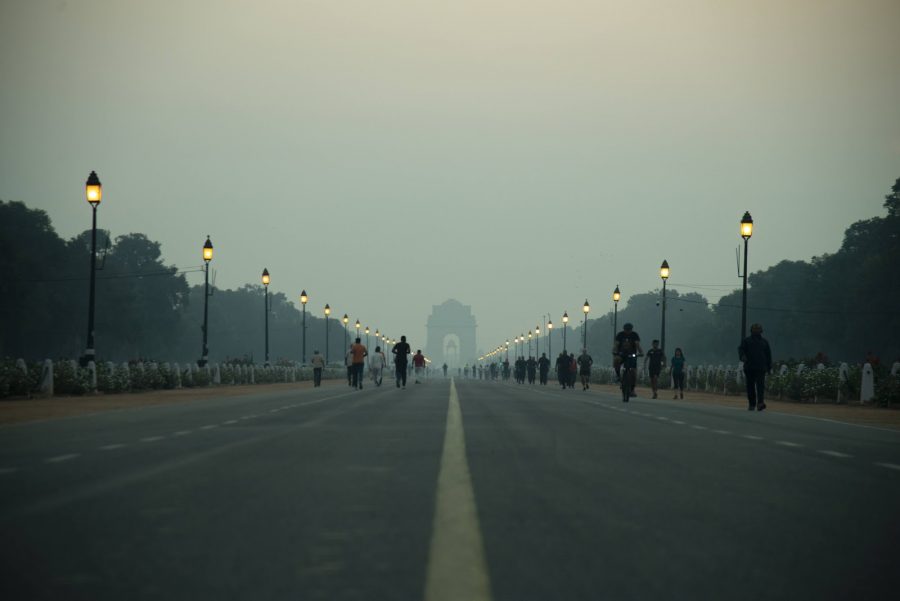The positive effect of a global lockdown on nature
View of the India Gate, at times of slow traffic, the bulk of the monument can be seen faintly. That blurred view is rapidly engulfed by pollution in the mornings and evenings. Picture taken before India’s coronavirus lockdown. Photo courtesy: Arvish Singh
April 20, 2020
The COVID-19 pandemic has no doubt brought about tremendous human sufferings around the world. Hospitals are overloaded with patients while the global economy is shrinking. But we have also seen pollution levels decrease worldwide, offering a peek into a possible future void of deadly greenhouse gases.
In the middle of New Delhi—India’s capital—is the India Gate, a memorial honoring the Indian soldiers who died during World War I. The monument is made up of sandstone, its dull orange a sharp contrast to the blue sky. Yet, for the past seven years, the monument that stands tall at 42 meters and stretches across 306,000 square meters has barely been visible from a few hundred feet away.
Pollution from the city’s 19 million residents has muddied its air and hangs like a stubborn blanket that has only thickened with time. Heavy-duty vehicles that use diesel and construction sites that pump road-dust into the atmosphere have sucked breathable air and replaced it with harmful air pollutants.
This has occured to the extent that the city’s pollution levels crossed the recommended WHO threshold by a factor of 50. Delhi’s pollution, similar to any other polluted city, is harmful to humans due to the presence of particulate matter of sizes below 2.5μm. Packed with sulfur and nitrogen oxides, these hazardous aerosols are so tiny that they can be inhaled, posing the greatest risk to human health.
However, the recent twenty-one day lockdown introduced by the Indian government to control the spread of coronavirus has completely halted the city’s transportation and construction industries, resulting in a sharp drop in pollution.
Many environmental groups took to Instagram to point out the sharp contrast.
Similar trends have been observed in major cities in India and across the world. Venice’s canals in northern Italy have become less opaque and fishes have begun to appear due to the stillness caused by the lack of boat traffic. The NASA Earth Observatory noticed an identical drop in China. Worldwide, the areas hit hardest by the virus have shown the steepest drop in pollution.
With billions of people worldwide staying at home to avoid the coronavirus, it is not surprising that this behavioral change has reduced pollution levels. Nature that is thriving in the absence of human interference offers two lessons. These pictures and graphs invoke nostalgia. They are a painful reminder of the past, of the world that existed before industries multiplied, humans flourished and pollution escalated.
At this time, pollution levels have dropped within weeks only because of the strict lockdowns in several countries across the world. These are extraordinary times and they will not last. Eventually, people will return to work. Some will use diesel-fueled vehicles to do so, others will commute via trains and buses and few of these vehicles will run on electricity.
The streets that are now devoid of traffic jams and incessant honking will return to their noisy existence. The airline industry, which is both the most significant contributor to greenhouse gases and the first to face losses due to the coronavirus will resume its operations and will yet again steadily pump carbon dioxide into the now clean air.
Once the world gets back on its feet, the pollution levels are likely to spike once again and reach their pre-COVID-19 states.
Because the current times are temporary, the graphs and images also offer a hopeful glimpse into a possible future. One where it is not too late for humans to choose to adopt environment-friendly practices and governments to support its citizens to lead that lifestyle. Humans’ actions in the future, if cautious, will benefit nature, which in turn will help those who reside in it.
These pictures serve as proof that the once green, less polluted Earth is not out of reach. Yet, when we step out into the post-pandemic world, we can choose to be more mindful of the environment this time around.

